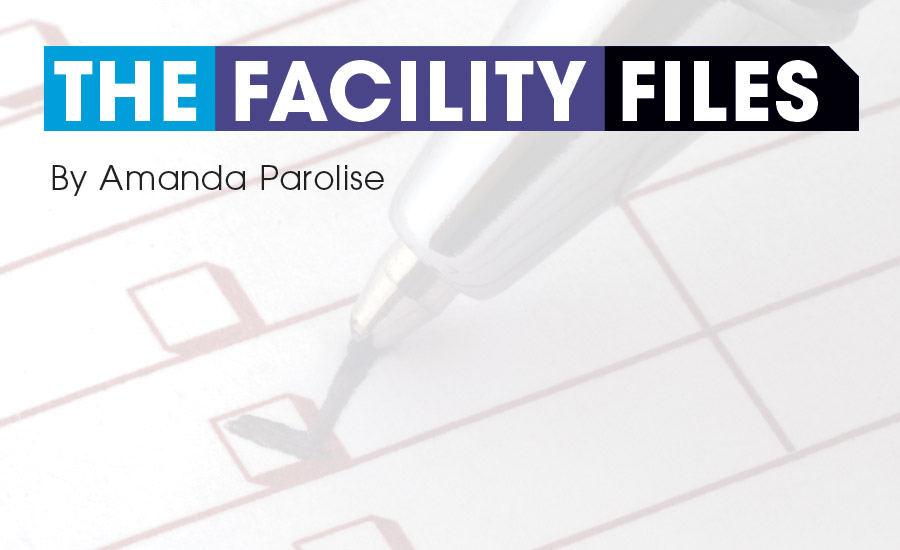This month’s B2B will focus on an existing two-story commercial office building receiving an energy grant to retrofit the existing air-cooled 160-ton chillers to an 80-ton, thermal energy storage (TES) system with new variable flow chilled water equipment. The office building has its own in-house O&M staff consisting of one technician and an assistant. These two individuals, along with the owner representative, will meet with the design engineer and the construction manager (CM) to discuss specific building standards and how they apply to this project.
The design engineer and the CM’s in-house mechanical and electrical coordinator will also outline the specific collection of equipment documents in a manner that will make seamless the compilation of the preventive maintenance (PM) work orders to populate the existing CMMS system so that the required work orders will be ready for day one of owner occupancy of the energy retrofitted chilled water equipment.
It would be very beneficial for the owner representative and the two technicians to review 2015 ASHRAE Handbook — HVAC Applications, chapter 3 (Commercial and Public Buildings), chapters 36-43 (Building Operation and Management), and chapter 59 (HVAC Security) for design guidelines. They should read 2016 ASHRAE Handbook — HVAC Systems and Equipment, chapter 43 (Liquid-Chilling System) for additional design information pertaining to the replacement of the existing air-cooled chillers with new, more energy-efficient air-cooled chillers. The two technicians should also read chapter 51 (Thermal Storage) to complete the design of this TES energy retrofit project.
Based on these design guidelines from ASHRAE, the engineer will meet with the owner’s team to discuss specific building standards that need to be applied to this project. With the O&M being performed by in-house staff, the design team needs to know this in advance to adjust their contract specifications pertaining to O&M, training, the preventive maintenance work order system, and the energy operating budget versus specifying outsourcing of the O&M.
In the design phase of the project, the owner representative and his O&M technicians will want to contribute information to the design team’s writing of the contract specification and more specifically the following activities: service contracts, parts inventory, and as-built drawings requirements. Reviewing the design documents, this O&M staff will want to be assured the equipment serviceability is adequate and safe (e.g., safe access to rooftop air-cooled chiller unit).
For a building program, as well as a business plan to continue to successfully manage the new air-cooled chiller, TES tank, associated pumps, and the office building’s HVAC systems, it’s imperative that the program includes an estimated annual O&M budget in addition to the program’s construction budget. The equipment life of air-cooled chillers and TES tanks are approximately 16-20 years of useful service life. The same can be said for base-mounted, end suction pumps.
The September B2B project delivery method is construction management with a guaranteed maximum price (GMP) so the CM and his in-house engineering and estimator will be involved in the design phase and be able to contribute to the contract documents. In the construction phase, the O&M staff will want to revisit the issues noted above during the design phase. Next comes the startup, TAB, and commissioning phases, and the O&M staff will want to be proactive in following along with the CM’s mechanical-electrical in-house coordinator and the subcontractor’s startup personnel and receive equipment training from the air-cooled chiller manufacturer’s startup technician and TES tank and system training using the O&M manuals and contract drawings (that will eventually become the as-built drawings).
Once the startup has been completed and the ATC subcontractor and third-party commissioning and testing, adjusting, and balancing (CxTAB) consultant has completed the water balancing work, the HVAC subcontractor will go through an automatic control system initial dry-run demonstration prior to the CM and his subcontractors demonstrating the system to the CxTAB consultant. The ATC subcontractor should also begin collecting system performance by trending pertinent HVAC system and equipment data by trending the following:
[X] outdoor air dry bulb and wet bulb temperature [X] in-room air dry bulb and wet bulb temperature [X] chilled water supply and return temperature during utility company peak load period [X] chilled water supply and return temperature during utility company off-peak load period [X] alarms [X] safety control points
Taking the same approach as the design engineering team, the building’s O&M personnel will use a series of computer-generated touchscreen project checklists that allows them to confirm that the following facility files have been collect. This process should start at the beginning of construction and not at project closeout so that the facility files can be inputted into a CMMS work order system. Touchscreen O&M checklists should include:
[X] equipment shop drawings [X] O&M manuals, parts list, and lubricants [X] troubleshooting tips [X] seasonal startup and shutdown instructions
The O&M staff will review the contractor-produced piping field fabrication/field coordination drawings prior to fabrication. Touchscreen service checklists should include:
[X] location of shutoff valves, ATC valves, and balancing valves [X] strainers [X] equipment and control devices [X] access for servicing equipment
The water balancing of the chiller, TES tank, and chilled water system along with the final TAB report will be included in the preventive maintenance work order system for rebalancing in a couple of years. In addition, the hydraulic modeling of the entire chilled water system will be updated after the final TAB report. This will require the CxTAB consultant to provide the water balancing reports along with the associated system flow diagrams noting quantities and pressures for rebalancing if necessary as part of the project closeout documents. Touchscreen training checklists should include:
[X] equipment [X] system [X] automatic controls [X] energy management







